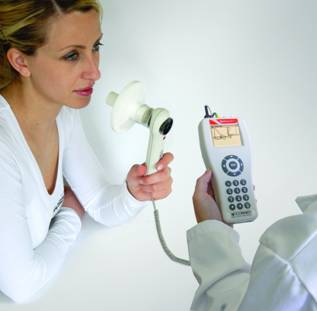Current Diagnostic Criteria for COPD Inadequate, Experts Say
 A recent analysis published in the BMJ details findings that indicate chronic obstructive pulmonary disease (COPD) management programs and guidelines consistently over-diagnose elderly patients and underdiagnose young ones. The analysis calls for the adoption of “lower limits of normal (LLN) criteria for airflow obstruction that are specific for different populations.”
A recent analysis published in the BMJ details findings that indicate chronic obstructive pulmonary disease (COPD) management programs and guidelines consistently over-diagnose elderly patients and underdiagnose young ones. The analysis calls for the adoption of “lower limits of normal (LLN) criteria for airflow obstruction that are specific for different populations.”
Martin R. Miller, MD, from the University of Birmingham in the United Kingdom, and Mark L. Levy, MBChB, from the Harrow Clinical Commissioning Group in London, United Kingdom, created the Global Initiative for Obstructive Lung Disease (GOLD) strategy with the intention to create “a new and simple threshold for airway obstruction.” Unfortunately, upon diligent new research, Miller and Levy both concluded that the GOLD standard – created in 2001- did not effectively diagnose COPD.
Miller and Levy also calculated that “as many as 13 percent of patients diagnosed with COPD under the GOLD criteria may be misdiagnosed (under-diagnosis as well as over-diagnosis). This misdiagnosis could lead to poor outcomes that result from inappropriate treatment.” Misdiagnosis may also result in patients missing out on necessary treatment.
The goal of Miller and Levy’s ongoing research is to help physicians move beyond spirometry and the GOLD standards, which can create “the myth of a health smoker”, and allow them to more accurately “diagnose patients who have symptoms of COPD. This is necessary because COPD is currently under-diagnosed during the early stages of disease, when preventive strategies might be most useful.”
Subsequently, the National Institutes of Health has also funded a study to “facilitate diagnosis of COPD in smokers and other patients. The goal is to create a five-question questionnaire that is able to diagnose clinically significant COPD.” Until the new guidelines are releases, Miller encourages physicians to incorporate “clinical perspective” into their tests for diagnoses.
Click Here to Access the Full Story on Medscape

